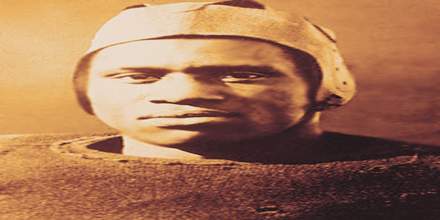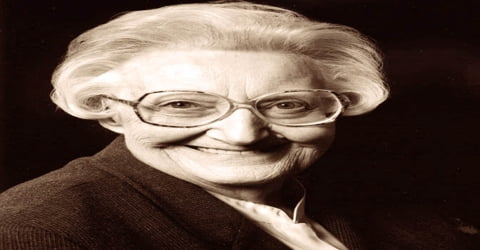Paul Robeson – (1898-1976)
(Athlete, Civil Rights Activist, Actor, Football Player, Singer, Lawyer)
Full Name: Paul Leroy Robeson
Date of birth: April 9, 1898
Place of Birth: Princeton, New Jersey, US
Date of death: January 23, 1976 (aged 77)
Place of death: Philadelphia, Pennsylvania, US
Occupation: Football Player, Singer, Actor, Social activist, Lawyer, Athlete
Spouse(s): Eslanda Robeson (m. 1921; d. 1965)
Children: Paul Robeson, Jr.
Early Life
Paul Leroy Robeson was born on April 9, 1898, in Princeton, New Jersey, US. He was an American bass singer and actor who became involved with the Civil Rights Movement. At Rutgers College, he was an outstanding American football player, and then had an international career in singing, with a distinctive, powerful, deep bass voice, as well as acting in theater and movies.
He was a famous African-American athlete, singer, actor, and advocate for the civil rights of people around the world. He rose to prominence in a time when segregation was legal in the United States, and Black people were being lynched by racist mobs, especially in the South.
He became politically involved in response to the Spanish Civil War, fascism, and social injustices. His advocacy of anti-imperialism, affiliation with communism, and criticism of the United States government caused him to be blacklisted during the McCarthy era. Ill health forced him into retirement from his career.
He became increasingly attuned towards the sufferings of other cultures and peoples. Acting against advice, which warned of his economic ruin if he became politically active, he set aside his theatrical career to advocate the cause of the Republican forces of the Spanish Civil War. He then became active in the Council on African Affairs (CAA).
During World War II, he supported America’s war efforts and won accolades for his portrayal of Othello on Broadway. However, his history of supporting pro-Soviet policies brought scrutiny from the FBI. After the war ended, the CAA was placed on the Attorney General’s List of Subversive Organizations and Robeson was investigated during the age of McCarthyism. Due to his decision not to recant his public advocacy of pro-Soviet policies, he was denied a passport by the U.S. State Department, and his income, consequently, plummeted. He moved to Harlem and published a periodical critical of United States policies. His right to travel was eventually restored by the 1958 United States Supreme Court decision, Kent v. Dulles, but his health broke down. He retired and he lived out the remaining years of his life privately in Philadelphia.
Educational Career
In 1912, Robeson attended Somerville High School, Somerville, New Jersey, where he performed in Julius Caesar, Othello, sang in the chorus, and excelled in football, basketball, baseball and track.
Robeson won an academic scholarship to Rutgers College, where he was twice named a consensus All-American and was the class valedictorian. He was later inducted into the College Football Hall of Fame. He received his LL.B. from Columbia Law School, while playing in the National Football League (NFL).
In late 1915, Robeson became the third African-American student ever enrolled at Rutgers, and the only one at the time.
Robeson entered New York University School of Law in fall 1919. He received the Phi Beta Kappa key in his junior year, belonged to the Cap & Skull Honor Society, and graduated as Valedictorian. However, it wasn’t until 1995, 19 years after his death, that Paul Robeson was inducted into the College Football Hall of Fame.
Professional Career
In 1924, Robeson played the lead in the production All God’s Chillun Got Wings, and the following year, he starred in the London staging of The Emperor Jones—both by playwright Eugene O’Neill. Robeson also entered film when he starred in African-American director Oscar Micheaux’s 1925 work, Body and Soul. Robeson continued to make waves in London in 1928 with his star turn on stage in Showboat, where he brought the house down with “Ol’ Man River,” a song destined to become his signature tune.
In the late 1920s, Robeson and his family relocated to Europe, where they lived for more than a decade. He established both a singing and film career, and his next big-screen feature was 1930’s Borderline. He was also in the 1933 movie remake of The Emperor Jones and would be featured in six British films over the next few years, including the desert drama Jericho and musical Big Fella, both released in 1937. During this period, Robeson also starred in the second big-screen adaptation of Show Boat (1936), with Hattie McDaniel and Irene Dunne. His last movie would be the star-studded Hollywood production Tales of Manhattan (1942), which featured legends like Henry Fonda, Ethel Waters and Rita Hayworth, among others. Robeson critiqued the film for its demeaning portrayal of African Americans.
In 1912, Robeson attended Somerville High School, Somerville, New Jersey, where he performed in Julius Caesar, Othello, sang in the chorus, and excelled in football, basketball, baseball and track.
In late 1915, Robeson became the third African-American student ever enrolled at Rutgers, and the only one at the time. He tried out for the Rutgers Scarlet Knights football team, and his resolve to make the squad was tested as his teammates engaged in unwarranted and excessive play, arguably precipitated by racism during which his nose was broken and his shoulder dislocated. The coach, Foster Sanford, decided he had overcome the provocation and announced that he had made the team.
After a standout junior year of football, he was recognized in The Crisis for his athletic, academic, and singing talents. He finished university with four annual oratorical triumphs and varsity letters in multiple sports. His play at end won him first-team All-American selection, in both his junior and senior years.
Robeson entered New York University School of Law in fall 1919. To support himself, he became an assistant football coach at Lincoln, where he joined the Alpha Phi Alpha fraternity. However, Robeson felt uncomfortable at NYU and moved to Harlem and transferred to Columbia Law School in February 1920. Already known in the black community for his singing, he was selected to perform at the dedication of the Harlem YWCA.
A beloved international figure with a huge following in Europe, Robeson regularly spoke out against racial injustice and was involved in world politics. He supported Pan-Africanism, sang for Loyalist soldiers during Spain’s civil war, took part in anti-Nazi demonstrations and performed for Allied forces during World War II. He also visited the Soviet Union several times during the mid-1930s, particularly taken with much of Russian folk culture and being treated with great dignity as an African American that he was often hard pressed to find in his home country. Robeson studied Russian, as did his son, who came to reside in the capital city of Moscow with his grandmother. Yet Robeson’s relationship with the U.S.S.R. became a highly controversial one during the Cold War. Scholars have also pointed out that the artist’s humanitarian beliefs stood in stark contrast to the state-sanctioned terror and mass killings imposed by Joseph Stalin.
Paul Robeson used his deep baritone voice to promote Black spirituals, to share the cultures of other countries, and to benefit the labor and social movements of his time. He sang for peace and justice in 25 languages throughout the U.S., Europe, the Soviet Union, and Africa. Robeson became known as a citizen of the world, equally comfortable with the people of Moscow, Nairobi, and Harlem. Among his friends were future African leader Jomo Kenyatta, India’s Nehru, historian Dr. W.E.B. Du Bois, anarchist Emma Goldman, and writers James Joyce and Ernest Hemingway. In 1933, Robeson donated the proceeds of All God’s Chillun to Jewish refugees fleeing Hitler’s Germany. At a 1937 rally for the anti-fascist forces in the Spanish Civil War, he declared, “The artist must elect to fight for Freedom or for Slavery. I have made my choice. I had no alternative.” In New York in 1939, he premiered in Earl Robinson’s Ballad for Americans, a cantata celebrating the multi-ethnic, multi-racial face of America. It was greeted with the largest audience response since Orson Welles’ famous “War of the Worlds.”
During the 1940s, Robeson continued to perform and to speak out against racism, in support of labor, and for peace. He was a champion of working people and organized labor. He spoke and performed at strike rallies, conferences, and labor festivals worldwide. As a passionate believer in international cooperation, Robeson protested the growing Cold War and worked tirelessly for friendship and respect between the U.S. and the USSR. In 1945, he headed an organization that challenged President Truman to support an anti-lynching law.
In 1948, Robeson was preeminent in Henry A. Wallace’s bid for the President of the United States, during which Robeson traveled to the Deep South, at risk to his own life, to campaign for him. In the ensuing year, Robeson was forced to go overseas to work because his concert performances were canceled at the FBI’s behest. While on tour, he spoke at the World Peace Council, at which his speech was publicly reported as equating America with a Fascist state—a depiction that he flatly denied. Nevertheless, the speech publicly attributed to him was a catalyst for his becoming an enemy of mainstream America. Robeson refused to subjugate himself to public criticism when he advocated in favor of twelve defendants, including his long-time friend, Benjamin J. Davis, Jr. charged during the Smith Act trials of Communist Party leaders.
On June 20, 1949, Robeson spoke at the Paris Peace Congress saying that “We in America do not forget that it was on the backs of the white workers from Europe and on the backs of millions of Blacks that the wealth of America was built. And we are resolved to share it equally. We reject any hysterical raving that urges us to make war on anyone. Our will to fight for peace is strong. We shall not make war on anyone. We shall not make war on the Soviet Union. We oppose those who wish to build up imperialist Germany and to establish fascism in Greece. We wish peace with Franco’s Spain despite her fascism. We shall support peace and friendship among all nations, with Soviet Russia and the people’s Republics.” He was blacklisted for saying this in the US mainstream press including many periodicals of the Negro press such as The Crisis.
A book reviewed in early 1950 as “the most complete record on college football” failed to list Robeson as ever having played on the Rutgers team and as ever having been an All-American.
In 1952 and 1953, he held two concerts at Peace Arch Park on the U.S.-Canadian border, singing to 30-40,000 people in both countries. In 1957, he made a transatlantic radiophone broadcast from New York to coal miners in Wales. In 1960, Robeson made his last concert tour to New Zealand and Australia.
Personal Life
Paul Leroy Robeson was born the last of eight children in the Robeson family, on April 9, 1898, in Princeton, New Jersey. His father, William Drew Robeson, was a runaway slave who fought for the North in the Civil War (1861–65), when Northern forces clashed with those of the South over secession, or the South’s desire to leave the Union.
Robeson’s family knew both hardship and the determination to rise above it. His own life was no less challenging.
Robeson had three brothers: William Drew, Jr. (born 1881), Reeve (born c. 1887), and Ben (born c. 1893); and one sister, Marian (born c. 1895).
Essie had learned early in their marriage that Robeson had been involved in extramarital affairs, but she tolerated them. However, when she discovered that he was having another affair, she unfavorably altered the characterization of him in his biography, and defamed him by describing him with “negative racial stereotypes”. Despite her uncovering of this tryst, there was no public evidence that their relationship had soured. In early 1930, they both appeared in the experimental classic Borderline, and then returned to the West End for his starring role in Shakespeare’s Othello, opposite Peggy Ashcroft as Desdemona.
After Essie’s discovery of Robeson’s affair with Ashcroft, she decided to seek a divorce and they split up. Robeson returned to Broadway as Joe in the 1932 revival of Show Boat, to critical and popular acclaim. Subsequently, he received, with immense pride, an honorary master’s degree from Rutgers. Thereabout, his former football coach, Foster Sanford, advised him that divorcing Essie and marrying Ashcroft would do irreparable damage to his reputation. Ashcroft and Robeson’s relationship ended in 1932, following which Robeson and Essie reconciled, although their relationship was permanently scarred.
Health
Back in London, he planned his return to the United States to participate in the Civil Rights Movement, stopping off in Africa, China and Cuba along the way. Essie argued to stay in London, fearing that he’d be “killed” if he returned and would be “unable to make any money” due to harassment by the United States government. Robeson disagreed and made his own travel arrangements, stopping off in Moscow in March 1961.
During an uncharacteristically wild party in his Moscow hotel room, he locked himself in his bedroom and attempted suicide by cutting his wrists. Three days later, under Soviet medical care, he told his son that he felt extreme paranoia, thought that the walls of the room were moving and, overcome by a powerful sense of emptiness and depression, tried to take his own life.
Robeson stayed at the Barvikha Sanatorium until September 1961, when he left for London. There his depression reemerged, and after another period of recuperation in Moscow, he returned to London. Three days after arriving back, he became suicidal and suffered a panic attack while passing the Soviet Embassy. He was admitted to The Priory hospital, where he underwent electroconvulsive therapy (ECT) and was given heavy doses of drugs for nearly two years, with no accompanying psychotherapy.
In August 1963, disturbed about his treatment, friends had him transferred to the Buch Clinic in East Berlin. Given psychotherapy and less medication, his physicians found him still “completely without initiative” and they expressed “doubt and anger” about the “high level of barbiturates and ECT” that had been administered in London. He rapidly improved, though his doctor stressed that “what little is left of Paul’s health must be quietly conserved.”
Death
On January 23, 1976, following complications of a stroke, Robeson died in Philadelphia at the age of 77. He lay in state in Harlem and his funeral was held at his brother Ben’s former parsonage, Mother AME Zion Church, where Bishop J. Clinton Hoggard performed the eulogy. His twelve pall bearers included Harry Belafonte and Pollard. He was interred in the Ferncliff Cemetery in Hartsdale, New York. According to biographer, Martin Duberman, contemporary post-mortem reflections on Robeson’s life in ” the white (American) press..ignored the continuing inability of white America to tolerate a black maverick who refused to bend, ..downplayed the racist component central to his persecution (during his life]”, as they “paid him gingerly respect and tipped their hat to him as a ‘great American,'” while the black American press, “which had never, overall, been as hostile to Robeson (as the white American press had), opined that his life ‘.would always be a challenge to white and Black America.'”
Honours
Several public and private establishments he was associated with have been landmarked, or named after him. His efforts to end Apartheid in South Africa were posthumously rewarded by the United Nations General Assembly. Paul Robeson: Tribute to an Artist won an Academy Award for best short documentary in 1980. In 1995, he was named to the College Football Hall of Fame. In the centenary of his birth, which was commemorated around the world, he was awarded a Lifetime Achievement Grammy Award, as well as a star on the Hollywood Walk of Fame. Robeson is also a member of the American Theater Hall of Fame.
As of 2011 the run of Othello starring Robeson was the longest-running production of a Shakespeare play ever staged on Broadway. He received a Donaldson Award for his performance. His Othello was characterised by Michael A. Morrison in 2011 as a high point in Shakespearean theatre in the 20th century.
- In 1976, the apartment building on Edgecombe Avenue in the Washington Heights section of Manhattan where Robeson lived during the early 1940s was officially renamed the Paul Robeson Residence, and declared a National Historic Landmark. In 1993, the building was designated a New York City landmark as well. Edgecombe Avenue itself was later co-named Paul Robeson Boulevard.
- In 1978, TASS announced that the Latvian Shipping Company had named one of its new 40,000-ton tankers Paul Robeson in honor of the singer. TASS said the ship’s crew would establish a Robeson museum aboard the tanker.
- In 2001, the Welsh rock band Manic Street Preachers released the single Let Robeson Sing from their album Know Your Enemy. The song is about the life of Paul Robeson.
- In 2002, a blue plaque was unveiled by English Heritage on the house in Hampstead where Robeson lived in 1929–1930.
- In 2004, the U.S. Postal Service issued a 37-cent stamp honoring Robeson.
- In 2007, the Criterion Collection, a company that specializes in releasing special edition versions of classic and contemporary films, released a DVD boxed set of Robeson films.
In popular culture
- Tom Rob Smith’s novel Agent 6 (2012) features the character “Jesse Austin, a black singer, political activist and communist sympathizer modeled after real-life actor/activist Paul Robeson. In his portrayal of Austin, Smith dramatizes little-known facts of the FBI’s harassment of Robeson and his family that give a chilling verisimilitude to the actions of an FBI agent hellbent on destroying a perceived threat to his country.”
- Black 47’s album Home of The Brave includes the song “Paul Robeson (Born To Be Free)”, which features spoken quotes of Robeson as part of the song. These quotes are drawn from Robeson’s testimony before the House Un-American Activities Committee in June 1956.
- In 1978, James Earl Jones performed his one-man show about Paul Robeson on Broadway, this was made into a TV movie in 1979.
- In November 2014 it was reported that film director Steve McQueen’s next film would be a biopic about Paul Robeson.
- In 2001, Welsh rock band Manic Street Preachers released a song titled Let Robeson Sing as a tribute to Robeson, which reached number 19 on the UK singles chart.
Paul Robeson Filmography
- Body and Soul (1924)
- Camille (1926)
- Borderline (1930)
- The Emperor Jones (1933)
- Sanders of the River (1935)
- Show Boat (1936)
- Song of Freedom (1936)
- Big Fella (1937)
- My Song Goes Forth (1937)
- King Solomon’s Mines (1937)
- Jericho/Dark Sands (1937)
- The Proud Valley (1940)
- Native Land (1942)
- Tales of Manhattan (1942)
- The Song of the Rivers (1954)
















